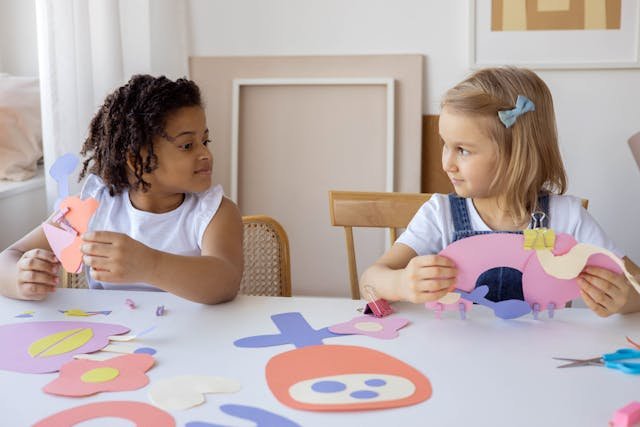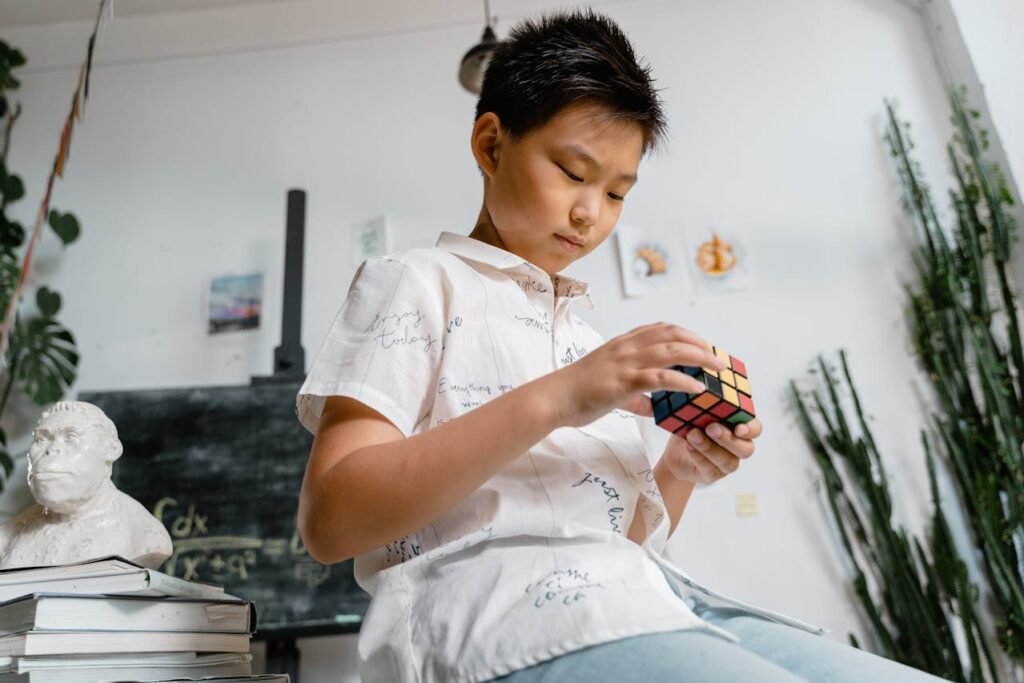Have you ever noticed how two children can face the same problem but react in very different ways? One might say, “This is too hard. I can’t do it.” The other might say, “This is hard, but if I keep trying, I’ll get it.” The difference between those two children is not how smart they are. It’s their mindset.
Mindset is the set of beliefs a child carries about themselves and their ability to learn. It’s like a quiet voice in their head that tells them whether to keep going or to give up. And here’s the amazing part: mindset shapes learning patterns. It affects how children study, how they handle mistakes, and how deeply they grow in every subject.
At Debsie, we’ve seen this in action with thousands of students across the world. Children who believe their effort matters often surprise themselves with how much they can achieve. On the other hand, children who believe their abilities are fixed often stop before they reach their true potential.
Fixed Mindset vs. Growth Mindset: Two Paths to Learning
When children approach learning, they often carry one of two hidden beliefs about themselves. These beliefs quietly shape how they handle challenges, mistakes, and effort. Psychologists call them the fixed mindset and the growth mindset.
The Fixed Mindset: “I’m Just Not Good at This”
A child with a fixed mindset believes their abilities are set in stone. They think intelligence is something you’re born with — you either “have it” or you don’t. So if they face a difficult math problem and struggle, they might say, “I’m bad at math,” instead of, “I need more practice.”
The fixed mindset makes mistakes feel like proof of failure. Instead of trying again, children may give up quickly or avoid tasks they find hard. Over time, this mindset limits how far they grow.
The Growth Mindset: “I Can Get Better With Practice”
A child with a growth mindset believes abilities can grow with effort. They see mistakes as part of the process and challenges as opportunities to improve. When they face that same tough math problem, they’re more likely to say, “This is tricky, but I’ll figure it out.”
The growth mindset doesn’t mean every task feels easy. It means children trust that their brain can change and improve when they keep trying. This belief gives them resilience, patience, and courage.
How These Mindsets Shape Learning Patterns
The way a child thinks about their own abilities affects how they study, how they approach schoolwork, and even how their brain responds to mistakes.
- Children with a fixed mindset tend to avoid difficult tasks, stick to what feels safe, and feel discouraged by setbacks. Their learning patterns often include shallow practice and low risk-taking.
- Children with a growth mindset, on the other hand, are more willing to attempt new challenges, repeat practice until they improve, and reflect on mistakes to grow. Their learning patterns are deeper, more persistent, and more creative.
At Debsie, we’ve seen both kinds of mindsets in action. A student might come to class saying, “I’m not good at science,” but after hands-on activities and encouragement, they begin to shift toward, “I’m learning how to do this.” That small change in belief transforms how they engage with every lesson.
The Science Behind Mindset and the Brain
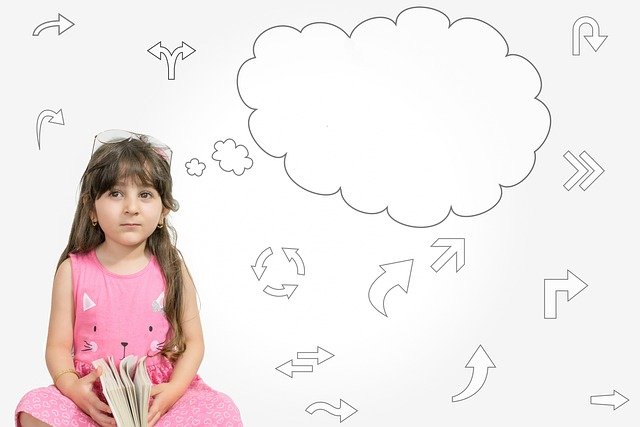
Mindset isn’t just a way of thinking. It has real effects on the brain. Scientists have found that the beliefs children hold about their abilities change how their brain responds to effort, mistakes, and learning itself.
The Brain Grows Like a Muscle
One of the most important discoveries in neuroscience is that the brain is not fixed. It changes and grows throughout life — a concept called neuroplasticity. Each time a child practices a skill, their brain forms stronger connections between neurons. Over time, these connections make the skill easier.
Children with a growth mindset believe in this process, even if they don’t know the science. When they think, “I can improve with practice,” they are more likely to keep trying, which literally helps their brain grow.
Children with a fixed mindset, however, may stop practicing early. Their brain misses out on the chance to strengthen those connections, and learning slows down.
Mistakes Activate the Brain
Research shows that when children make a mistake, their brain activity increases. This means mistakes are actually moments of powerful learning — the brain is noticing the error, adjusting, and building a stronger pathway.
But here’s the key: children with a growth mindset show more brain activity after mistakes than children with a fixed mindset. Why? Because they stay engaged instead of shutting down. Their belief that they can improve keeps their brain active and ready to learn from the error.
Effort Feels Different Depending on Belief
For a child with a fixed mindset, effort feels like proof that they aren’t smart enough. They may think, “If I were really good at this, I wouldn’t have to try so hard.”
For a child with a growth mindset, effort feels like the path to success. They think, “The more I practice, the better I’ll get.” This positive relationship with effort encourages persistence, and persistence leads to deeper learning patterns.
Belief Shapes Motivation
Mindset also influences motivation. Children who believe they can grow are more likely to stay motivated, even when tasks get harder. They see challenges as exciting instead of threatening.
This motivation changes learning patterns. Instead of giving up after one attempt, they try again, look for new strategies, or ask for help. Over time, this creates a habit of resilience — the ability to keep moving forward even when things feel tough.
At Debsie, our teachers often remind students that the brain grows with practice. We celebrate mistakes as learning steps, and we highlight effort as much as results. This helps students shift their mindset from fixed to growth, which in turn changes how they approach every subject.
How Mindset Shapes Learning in Different Subjects
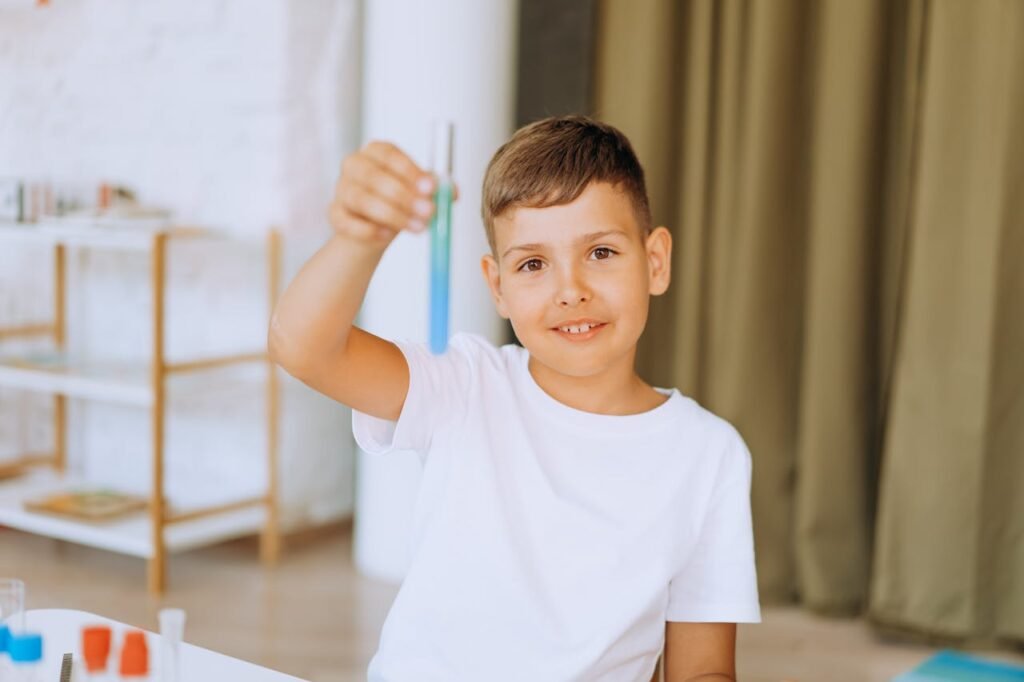
Mindset isn’t limited to general behavior. It shows up in every subject a child studies. Whether it’s math, science, reading, or creative work, a child’s beliefs about themselves change how they learn, practice, and grow.
In Math: Confidence to Try Again
Math is one of the first places where mindset makes a huge difference. Children with a fixed mindset often see math as a test of intelligence. If they can’t solve a problem right away, they may say, “I’m just not a math person.” They avoid challenges and stick to what feels safe, which limits their growth.
Children with a growth mindset approach math differently. They see problems as puzzles. If they make a mistake, they try again. They look for patterns, test new methods, and stay curious. This persistence builds stronger problem-solving skills and a deeper understanding of math.
In Science: Curiosity vs. Fear of Being Wrong
Science is all about asking questions and testing ideas. But a fixed mindset can hold children back. If they fear being wrong, they may stop asking questions or avoid experiments that could fail.
Children with a growth mindset, however, thrive in science. They treat experiments as adventures. Failure is just part of discovery. This attitude leads them to test more ideas, notice patterns, and connect concepts more easily. Over time, they develop the habit of thinking like real scientists.
In Reading and Language: Effort Builds Skill
Reading can be frustrating for children who struggle with fluency or comprehension. A fixed mindset may make them believe they’ll “never be good readers.” They may resist practice, which slows their progress further.
Children with a growth mindset understand that reading improves with practice. They take on challenges like longer books or new vocabulary, knowing that effort will pay off. This belief shapes their learning patterns: instead of stopping at difficulties, they lean into them.
In language learning, mindset matters even more. Mistakes in speaking or writing are part of the process. Children with a growth mindset are more willing to speak up, practice, and learn from corrections — leading to faster improvement.
In Creativity and the Arts: Freedom to Explore
Creative work like writing, drawing, or music requires trying new things without fear. A fixed mindset can block creativity, because children may avoid taking risks if they worry about being judged.
A growth mindset opens the door to creativity. Children experiment freely, knowing that mistakes are part of the process. They learn to see their work as evolving, not fixed. This freedom encourages innovation, originality, and joy in self-expression.
At Debsie, we see how mindset shapes learning patterns in every class. Two children might start at the same level, but the one who believes they can grow often makes faster progress — not because they’re “smarter,” but because they stay engaged, curious, and willing to try again.
Real-Life Learning Patterns: Spotting Mindset in Action

Mindset is not always obvious in what a child says. It often shows up in how they behave while learning. Parents and teachers can spot the patterns once they know what to look for.
Fixed Mindset Learning Patterns
Children with a fixed mindset often show certain behaviors when faced with schoolwork or challenges. They may avoid difficult tasks, give up quickly when something feels hard, or stick only to activities they already know they can do well.
For example, a child might always choose the easiest book in reading class, or avoid math problems that require multiple steps. They may become upset when corrected or compare themselves to others, saying things like, “She’s smarter than me” or “I’ll never be good at this.”
These patterns are not signs of laziness. They are signs that the child believes their ability is fixed — so mistakes feel like proof of failure.
Growth Mindset Learning Patterns
Children with a growth mindset show different patterns. They often choose challenges, even if they’re difficult. They’re willing to try new things, and when mistakes happen, they keep going.
For example, a child with this mindset may choose a harder puzzle because they want to test themselves. They may ask questions like, “What happens if I try this another way?” or “Can you explain why this works?” Mistakes don’t scare them. They see them as part of the process.
These patterns lead to deeper learning. Instead of memorizing quickly and forgetting later, they build lasting understanding because they stay engaged longer.
How Parents Can Spot Mindset at Home
Parents often see mindset in small, everyday moments. Does your child get frustrated and quit when building Lego? Or do they rebuild it with a new approach? Do they avoid trying new foods, games, or hobbies, or are they curious and willing to test things out?
Homework is another clear place. Children with a fixed mindset may say, “I can’t do this,” and close the book. Children with a growth mindset may say, “This is hard, but I’ll try again,” and ask for help when needed.
Parents don’t need to label their child, but noticing these patterns can help them know when to encourage effort, celebrate persistence, and gently guide their child toward a growth mindset.
At Debsie, our teachers are trained to spot these patterns in class. We look beyond right or wrong answers to see how a child approaches the task. This helps us support not just knowledge growth, but mindset growth — which is the real foundation for learning.
Helping Children Shift From Fixed to Growth Mindset

The good news about mindset is that it’s not permanent. Children can learn to see their abilities differently, especially when adults around them model and encourage the right approach. With patience and small changes, parents and teachers can help children shift from “I can’t” to “I’ll try again.”
Change the Way We Praise
The type of praise children hear has a huge impact on their mindset. When we say things like, “You’re so smart,” children may begin to believe their ability is fixed. If they later struggle, they may feel less smart and give up.
Instead, praising effort, strategies, and persistence builds a growth mindset. Saying, “I love how hard you worked on that,” or “You kept trying different ways until it worked,” teaches children that progress comes from effort, not luck or talent.
Celebrate Mistakes as Learning Moments
Children often fear mistakes because they think mistakes mean failure. Parents and teachers can shift this by treating mistakes as a natural and valuable part of learning.
For example, if a child spells a word wrong, instead of saying, “That’s wrong,” you can say, “Great try! Let’s look at it again and see what’s different.” This encourages curiosity rather than shame.
At Debsie, our teachers often say, “Mistakes show us where the brain is growing.” This simple message helps children feel proud of the effort, even when the answer isn’t perfect yet.
Model Growth Mindset Yourself
Children learn mindset by watching adults. When parents say, “I’m bad at math,” or “I can’t cook,” children absorb the message that abilities are fixed. But when adults model persistence — “This recipe didn’t work, but I’ll try again tomorrow” — children see growth mindset in action.
Teachers can model this too. If technology glitches in class, a teacher who says, “Let’s problem-solve together,” shows students that challenges can be solved with patience.
Ask Questions That Encourage Thinking
The way we talk to children shapes their learning patterns. Instead of asking only for right answers, ask open questions like:
- “What strategy did you use?”
- “What could you try differently next time?”
- “What did you learn from that attempt?”
These questions shift focus away from perfection and toward growth, teaching children to reflect and try again.
Build Patience Step by Step
A child doesn’t change mindset overnight. The shift happens slowly, through repeated experiences of persistence paying off. Parents and teachers can support this by setting small, reachable challenges and celebrating progress along the way.
For example, if a child gives up after five minutes, encourage them to stay for seven minutes next time. Each small step builds confidence that effort leads to improvement.
At Debsie, we weave growth mindset into every lesson. Our teachers don’t just teach subjects — they teach resilience, patience, and the belief that every child can grow. Over time, this belief becomes part of who the child is, shaping how they learn for life.
How Mindset Shapes Long-Term Success
Mindset doesn’t stop at the classroom door. The beliefs children carry about learning follow them into every stage of life. From middle school to high school, from college to careers, mindset shapes how they face challenges, how they grow, and how far they go.
Academic Success
In school, growth mindset often makes the difference between giving up and moving forward. Students with a fixed mindset may avoid advanced classes or new subjects because they fear failure. They choose safety over growth.
Students with a growth mindset are more likely to challenge themselves. They may not always succeed right away, but they learn more because they keep going. Over time, this leads to stronger skills, higher grades, and a deeper love of learning.
At Debsie, we’ve seen children who once avoided tough subjects begin to thrive when they shift their mindset. A child who once said, “I’m bad at science,” may grow into someone who eagerly designs experiments and explains concepts to others — all because they learned that effort leads to growth.
Resilience in Adolescence
The teenage years bring new challenges: exams, peer pressure, and growing independence. Teens with a fixed mindset may feel crushed by setbacks, thinking one failure defines them.
Teens with a growth mindset approach these years differently. They may still feel pressure, but they recover faster from disappointment. They see mistakes as feedback, not final judgment. This resilience helps them navigate not just academics, but friendships, identity, and future planning.
Success in Careers and Adulthood
In adulthood, the same patterns continue. People with a fixed mindset often avoid new challenges at work. They may hesitate to learn new skills or step into leadership roles because they fear making mistakes.
People with a growth mindset, however, continue learning throughout life. They’re more open to training, more willing to adapt, and more confident in trying new approaches. Employers value these traits, and they often lead to greater opportunities and career success.
Lifelong Learning and Happiness
Growth mindset doesn’t just improve school or career outcomes. It also shapes personal happiness. People who believe they can grow are more likely to take up hobbies, learn new skills, and stay mentally active as they age.
Studies even suggest that growth mindset is linked to better mental health. Children and adults who see challenges as opportunities experience less stress and more motivation. They carry a sense of hope that fuels progress in every part of life.
At its heart, mindset is not just about achievement. It’s about confidence, resilience, and joy in learning. When children believe they can grow, they don’t just perform better in school — they build the tools to thrive in every part of their future.
How Debsie Nurtures a Growth Mindset
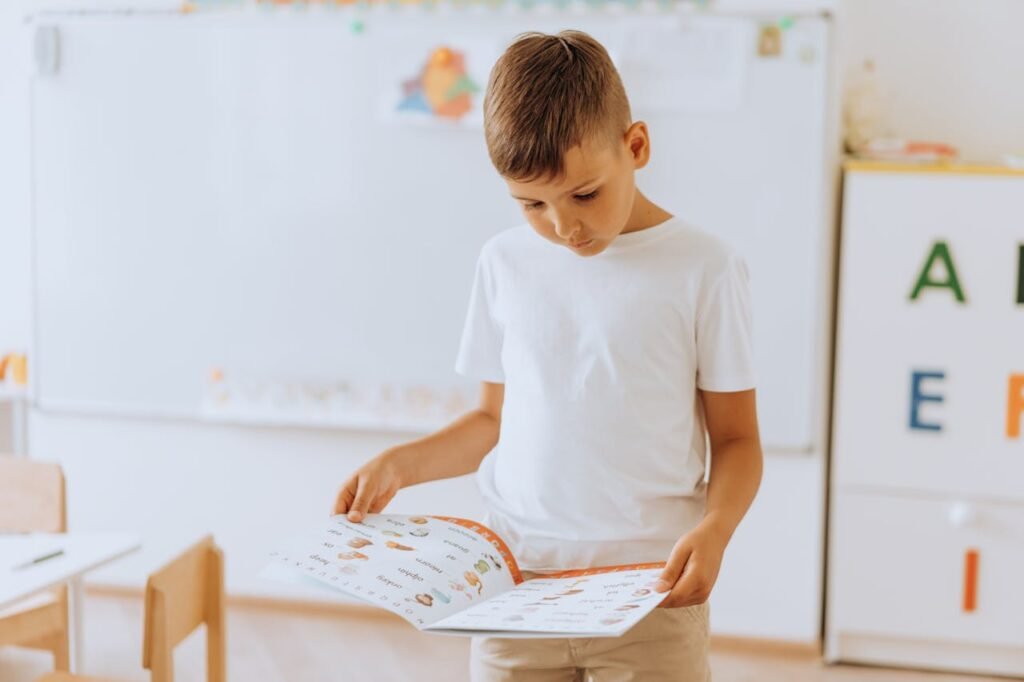
At Debsie, we believe every child has the potential to grow, no matter where they start. That’s why our teaching approach goes beyond facts and formulas. We focus on building resilience, patience, and confidence — the foundations of a growth mindset.
Encouraging Effort and Curiosity
In our classrooms, effort matters as much as answers. Teachers celebrate the process, not just the result. When a child tries multiple strategies in math or experiments with a science question, we highlight their persistence. This teaches children that progress comes from trying, testing, and learning, not from instant success.
Turning Mistakes Into Learning Moments
At Debsie, mistakes are never something to be ashamed of. They are treated as stepping stones. If a child makes an error in coding or mispronounces a word in reading, our teachers guide them to reflect, adjust, and try again. This approach reduces fear and builds confidence in tackling challenges.
Making Learning Active and Engaging
Children learn best when they are engaged. That’s why Debsie lessons are interactive, hands-on, and filled with real-life connections. Whether it’s modeling science experiments with simple tools at home or solving puzzles in math, our classes keep students curious and motivated. Active learning naturally strengthens a growth mindset because children see learning as exciting, not intimidating.
Building a Supportive Learning Community
Mindset is also shaped by the environment. At Debsie, our classes are designed to be safe spaces where students feel supported. We encourage teamwork, respectful discussion, and sharing ideas. This helps children see that learning is a journey they don’t have to take alone — they can grow with others by their side.
Conclusion: The Mindset That Shapes the Future
A child’s mindset is one of the most powerful tools they carry. It quietly guides how they study, how they handle failure, and how far they believe they can go. A fixed mindset can close doors, but a growth mindset opens them wide — making every challenge a chance to grow stronger.
The science is clear: belief changes the brain. When children see effort as the path to success, their learning patterns deepen. They try longer, think harder, and build resilience that serves them not only in school but in every stage of life.
At Debsie, we help children build this mindset every day. Through encouragement, active lessons, and a culture of curiosity, we nurture learners who don’t just aim for grades but for growth.
👉 Book a free trial class with Debsie today and see how we help children shift from “I can’t” to “I can grow.”
👉 Explore our wide range of courses — from math and science to history, coding, and languages — all taught with heart, patience, and the belief that every child can improve.
Because when children believe they can grow, they don’t just learn differently — they live differently. And that belief is a gift that lasts a lifetime.
Read Next:

